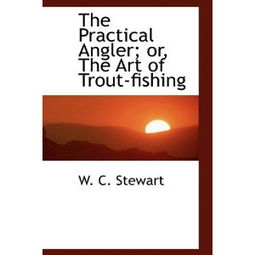Content:
Fishing is not just a hobby; it's a timeless activity that teaches patience, responsibility, and the joy of nature. As parents, we often wonder how to help our children develop their fishing skills. With the right guidance and practice, kids can become adept anglers in no time. Here's a comprehensive guide on how to teach your child the art of fishing.
Start with the Basics
Before diving into the world of fishing, it's essential to lay a strong foundation. Here are some fundamental steps to help your child get started:
a. Choose the Right Equipment
Selecting the appropriate fishing gear is crucial for a successful fishing experience. For kids, it's best to start with lightweight, durable equipment that is easy to handle. Here's what you'll need:
- Rod and Reel: A spinning rod and reel combination is often the best choice for beginners. Look for a rod that is about the same length as your child is tall.
- Line: Use a monofilament line that is 6 to 8 pounds test. This is strong enough to handle most fish but light enough for kids to manage.
- Hooks: Start with small hooks (sizes 6 to 10) that are appropriate for the type of fish you're targeting.
- Bobber: A floating bobber helps kids see when a fish is biting.
- Lures and Bait: Depending on the fish you're after, you might use artificial lures or live bait. For beginners, a simple worm or grub can be effective.
b. Learn the Basics of Casting
Casting is the most fundamental skill in fishing. Here's how to teach your child to cast:
- Hold the Rod: Teach your child to hold the rod with a comfortable grip, with the reel in their dominant hand.
- Backcast: Show them how to bring the rod back over their shoulder, then flick their wrist to release the line.
- Forward Cast: After practicing the backcast, teach them to cast forward by repeating the motion with the rod pointing towards the target.
- Practice: Encourage your child to practice casting in an open area until they can do it consistently.
Teach Them to Read the Water
Understanding water conditions is key to successful fishing. Here's what you can teach your child:
a. Observe the Water
Teach your child to look for signs of fish, such as ripple lines, bubbles, or fish jumping out of the water. They should also learn to identify areas with good cover, like rocks, logs, or vegetation, where fish like to hide.
b. Understand Fish Behavior
Different fish species have different habits. Teach your child about the behavior of the fish they're targeting, such as their preferred feeding times and habitats.
Patience is a Virtue
Fishing is a patient sport. Teach your child the importance of being patient and waiting for the fish to bite. Here are some tips:
a. Explain the Process
Help your child understand that fishing is a process that requires time and patience. They won't catch fish every time they go out, but with practice, they'll improve.
b. Encourage Them to Observe
While waiting for a bite, encourage your child to observe their surroundings and learn about the environment. This can make the experience more enjoyable and educational.
Safety First
Safety should always be a priority when fishing with kids. Here are some safety tips:
a. Wear a Life Jacket
Always wear a life jacket when fishing from a boat or near water. For shore fishing, make sure your child is within arm's reach of an adult.
b. Learn to Tie Knots
Teach your child how to tie basic knots, such as the improved clinch knot or the Palomar knot. This will help them change their line or rig their rod more effectively.
c. Stay Hydrated and Protected
Ensure your child stays hydrated and protected from the sun with sunscreen and a hat.
Have Fun and Be Creative
Fishing is a great opportunity to be creative. Encourage your child to experiment with different lures, baits, and techniques. Here are some fun activities:
a. Build a Lure
Teach your child how to make simple fishing lures using household items like ping pong balls, straws, and paint.
b. Create a Fish Log
Encourage your child to keep a log of their fishing trips, noting the types of fish they caught, the weather conditions, and any interesting observations.
Continue Learning and Practicing
The best way to improve fishing skills is through continuous learning and practice. Here's how to keep your child engaged:
a. Take Them to Different Locations
Varying the fishing spots can keep the experience fresh and exciting. Try different lakes, rivers, and ponds to expose your child to various fishing environments.
b. Attend Fishing Clinics or Workshops
Many organizations offer fishing clinics and workshops for kids. These events can provide valuable hands-on experience and tips from experienced anglers.
Conclusion
Teaching your child to fish is a rewarding experience that can instill lifelong skills and memories. By starting with the basics, teaching them to read the water, emphasizing patience, ensuring safety, and having fun, you can help your child develop their fishing skills. Remember, the key is to enjoy the process and let your child learn at their own pace. Happy fishing!












